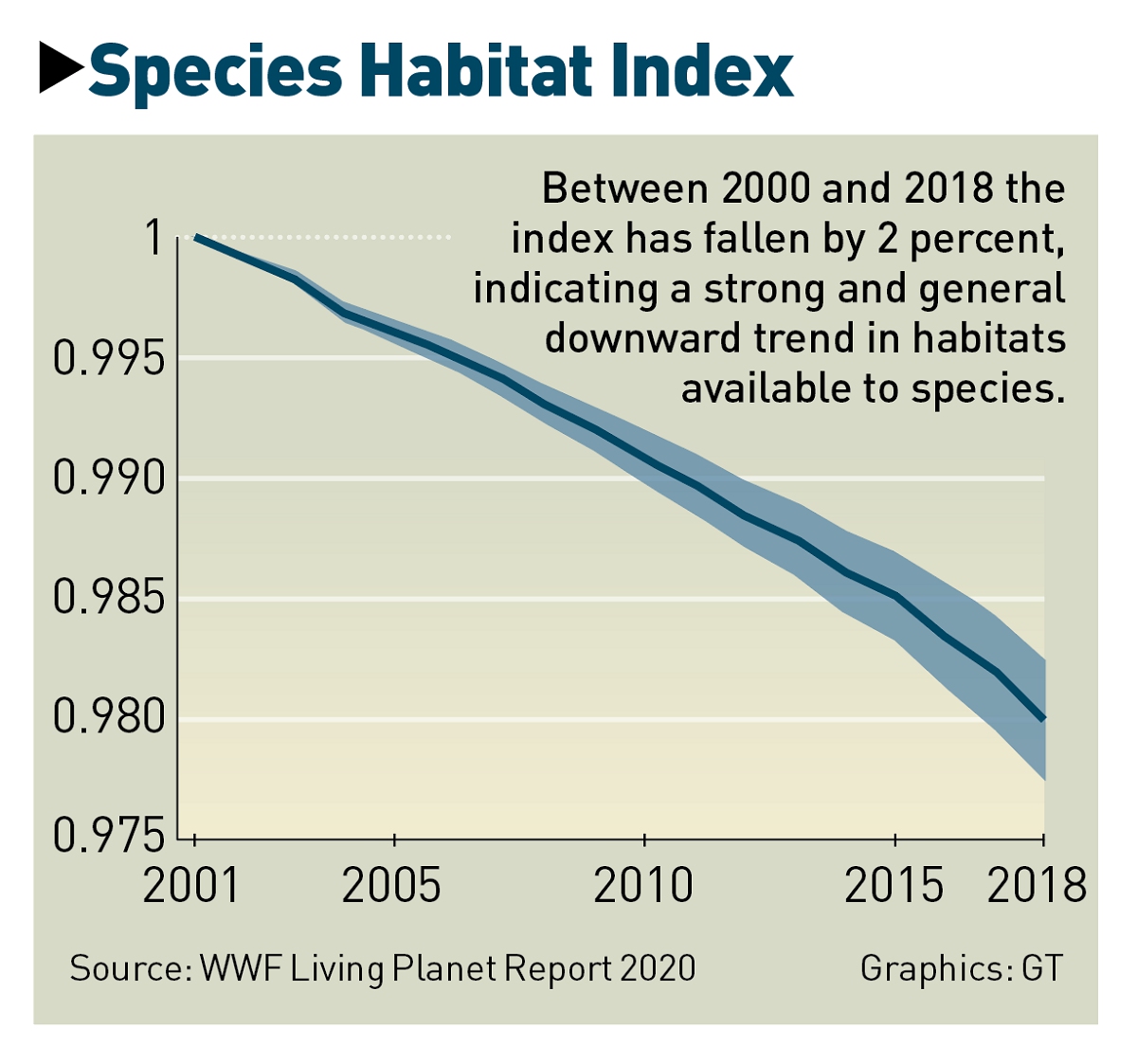Wild animal populations not declining as feared: study
Source: AFP Published: 2020/11/19 20:18:40
The population of most wild animals with a backbone - mammals, amphibians, birds, reptiles and fish - is stable, scientists said Wednesday in a finding sharply at odds with a benchmark report issued every two years by environmental group WWF.

In September, the WWF's Living Planet Index reported an average 68 percent fall in the populations of all animals monitored, a grim figure that made headlines worldwide.
"Collapsing all population trends into a single value can give the impression that everything is declining," Brian Leung, senior author of the new study and a professor at McGill University in Canada, told AFP.
"However, the image of a global 'biodiversity desert' is not supported by the evidence."
There are in fact regions where most species within certain groups are on a clear downward spiral, such as birds in the Asia-Pacific region and reptiles in the Americas.
But including them in an overall average can be misleading, Leung said.
"The Living Planet Index metric does not actually show that 68 percent of all populations have been lost," he noted by email.
"Unfortunately, it is hard to not leave with that impression."

ZSL scientist Robin Freeman, also a coauthor of the new study, published in Nature, acknowledged in a blog post that "removing these clusters [of extreme decline] leave a distribution of population that appears, on average to be stable."
"However, this doesn't mean that the remaining 99 percent of all populations in the Index are doing fine."
Freeman proposed yet another way of calculating the data to make his point.
Setting aside 10 percent of the vertebrate populations at both extremes - those that have declined and increased the most - "still reveals a decline of 42 percent since 1970," he said.
Leung noted that in some areas animal populations are increasing.

Looking at 14,000 vertebrate populations monitored by WWF since 1970, researchers found that if the 1 percent suffering the worst declines are removed from the equation, the remaining populations, grouped together, are holding steady in terms of overall numbers.
In September, the WWF's Living Planet Index reported an average 68 percent fall in the populations of all animals monitored, a grim figure that made headlines worldwide.
"Collapsing all population trends into a single value can give the impression that everything is declining," Brian Leung, senior author of the new study and a professor at McGill University in Canada, told AFP.
"However, the image of a global 'biodiversity desert' is not supported by the evidence."
There are in fact regions where most species within certain groups are on a clear downward spiral, such as birds in the Asia-Pacific region and reptiles in the Americas.
But including them in an overall average can be misleading, Leung said.
"The Living Planet Index metric does not actually show that 68 percent of all populations have been lost," he noted by email.
"Unfortunately, it is hard to not leave with that impression."

A lion and a cub seen at a safari zoo in Nadezhdinsky District. Safari visitors can drive past wild animals and feed them by themselves on May 14. Photo: VCG
Asked to comment on the report, WWF referred AFP to the Zoological Society of London (ZSL), which coauthors the flagship Living Planet reports.ZSL scientist Robin Freeman, also a coauthor of the new study, published in Nature, acknowledged in a blog post that "removing these clusters [of extreme decline] leave a distribution of population that appears, on average to be stable."
"However, this doesn't mean that the remaining 99 percent of all populations in the Index are doing fine."
Freeman proposed yet another way of calculating the data to make his point.
Setting aside 10 percent of the vertebrate populations at both extremes - those that have declined and increased the most - "still reveals a decline of 42 percent since 1970," he said.
Leung noted that in some areas animal populations are increasing.
Posted in: CROSS-BORDERS